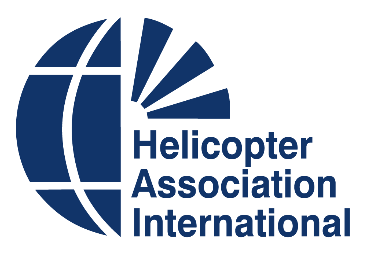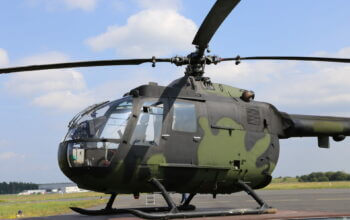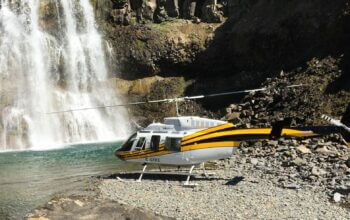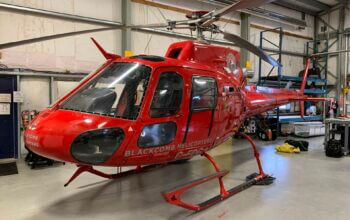Helicopter Association International (HAI) has released the following statement regarding the crash of an air ambulance helicopter in Ohio in January 2019:
Like many others in the rotorcraft industry, staff members from Helicopter Association International (HAI) viewed the May 19, 2020 National Transportation Safety Board (NTSB) board hearing on the cause of a January 2019 crash of a helicopter air ambulance (HAA) flight in Ohio. HAI appreciates the extraordinary efforts made by the investigative team in determining the myriad factors that led to the accident, which took the lives of three people who were on a mission to save lives. We offer our deepest condolences to the families, friends, and co-workers of those lost in the accident.
HAI supports many of the NTSB’s recommendations and suggestions but believes that the NTSB overstated some solutions while overlooking other potentially valuable programs. HAI leads several initiatives aimed at reducing accidents across the rotorcraft spectrum, agreeing with the International Helicopter Safety Foundation’s (IHSF) goal of zero fatal accidents.
“HAI takes a holistic view of safe flight operations,” said James A. Viola, president and CEO of HAI. “Just as there is no one single cause for accidents, we believe there is no one single solution to preventing them. Companies and individuals must use training, technology, and a positive safety culture to reduce the causal factors for accidents.
“We agree that flight-data monitoring equipment can be valuable. But, as indicated in the hearing, industry follow-through with programs that use the data to improve operational safety may be inadequate,” added Viola. “We believe this data should be shared with programs like the government-industry Aviation Safety Information Analysis & Sharing (ASIAS), which anonymously compiles information from participating operators’ flights to provide a snapshot of how our industry is doing and where improvements are needed. We also applaud the FAA for beginning to include the rotorcraft community in Info-Share, an industry-government sharing of safety information to increase safety in our community.
“HAI also agrees that safety management systems (SMS) have a place in business operations,” Viola continued. “However, we also recognize that voluntary SMS while supported by the FAA, is not being fully optimized and implemented because of limited resources. We fully support revisions to SMS that include the adoption of industry best practices and standards that are acceptable to the FAA, and potentially having an SMS program approved by third-party entities. HAI produced a video on establishing an SMS program a number of years ago that discusses many of these elements.
“Safety culture was brought up again and again during the hearing,” said Viola. “Safety culture is an integral part of SMS, where it enables organization-wide support for hazard reporting and risk analysis and management. Safety culture begins at the very top, with the public commitment of an organization’s management. That commitment is carried through the entire organization, from the top down, through implementation of policies, procedures, and demonstrated behaviors. Again, an SMS should include all industry best practices.”
However, HAI would like to comment on the NTSB’s naming of the Federal Aviation Administration (FAA) as contributing to the accident through inadequate oversight of the operator’s risk management program, which led to the following recommendation by the NTSB:
- Require that principal operations inspectors (POI) assigned to helicopter air ambulance (HAA) operations possess helicopter and either HAA experience or experience as an assistant POI under a POI with HAA experience.
HAI believes that requiring the FAA to hire and train helicopter-specific POIs will not adequately address the issues identified during the NTSB hearing, and may instead lead to delays in implementing safety initiatives.
“The safety issues attributed to the POI during the hearing were irrelevant to their specific aircraft training or expertise. Helicopter-specific experience does not significantly improve a safety professional’s ability to monitor the use of a risk assessment or SMS program,” said Viola. “HAI’s concern is that rotorcraft operators will end up waiting for their specific rotorcraft POI, who is suddenly backlogged or otherwise unavailable, and safety initiatives will lag as a result.”
HAI favors replacing the NTSB’s recommendation to the FAA that is quoted above with the following recommendations to the rotorcraft/vertical flight industry, the medical transport system industry, and the aviation insurance industry:
- HAI should provide accreditation of all HAA operations that voluntarily meet all NTSB recommendations;
- Referring medical transport agencies should select HAA providers only from accredited operators, similar to requirements in offshore support and government firefighting contracts;
- Aviation insurance companies should familiarize themselves with the higher level of safety achievable through volunteer programs and practices recommended by the IHSF.
HAI, along with several other aviation associations, offers safety accreditation programs for its members. HAI believes the programs offer valuable third-party reviews of operations and can play a significant role in enhancing operators’ processes, procedures, safety, and culture.
“The HAI Accreditation Program of Safety (HAI-APS) helps helicopter operators reduce accident and incident rates by improving their safety culture. We developed the program to help participating businesses ‘fly to a higher standard’ of safety and professionalism,” says Viola. “Our program is mission-specific and meets all International Standard for Business Aircraft Operations (IS-BAO) safety standards.”
Other groups providing accreditation services include the Commission on Accreditation of Medical Transport Systems (CAMTS), which provides standards specific to the HAA community that also meet IS-BAO standards.
“We fully support the use of accreditation programs,” added Viola. “We recommend leveraging the benefits of such programs to the maximum extent possible.”
Finally, HAI’s Land & Live program encourages pilots in every sector of the helicopter industry to refuse unsafe missions or to land quickly when weather or maintenance issues threaten existing flights. HAI encourages pilots to “take the pledge” to promote their willingness to put safety above all other considerations and turn down potentially dangerous flights. To support the growth of this safety initiative, pilots can also share their stories of when they chose to Land & Live.









